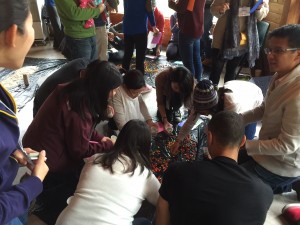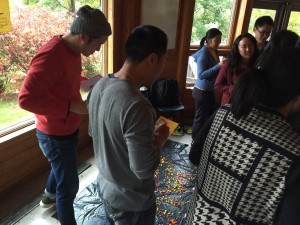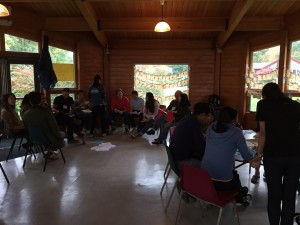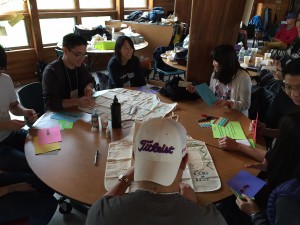Life Simulation Activity
The Life Simulation is an introspective activity that simulates a person’s life and how he or she spends their time. During the activity, you have an opportunity to make life “decisions” that will affect each subsequent stage of your life. These decisions should cause you to introspectively prioritize different aspects of your life and to think about the things that are important. For this activity, you will primarily be making decisions as an individual. There is no winning or losing in this game.
The activity works best with large (over 40-50) numbers of people. Ideally, the game could be played at a camp or retreat or some other setting with large numbers of people. You will also need about an hour to play.
Materials Required
Here the necessary printable materials for this activity:
- Printable Life Simulation Stations and Volunteer Guide
- Printable Life Simulation_Circumstance Cards
- Printable Life Simulation Stamp Card
This activity requires a large number of additional materials to work properly. At minimum, you will use play money and stamp cards to track a person’s progress. There are various stations that require additional materials. This is explained in greater detail below. You will also need about 5-10 volunteers to help supervise the stations. Some stations will require light role-playing or acting, but nothing too dramatic.
To begin, give each participant a Stamp card and $1 in play money. Each person will be required to keep and carry this card throughout the entire activity. If possible, also hand out a copy of the Rules so that participants have a time to familiarize themselves with what is and is not possible within the constructs of the simulation.
Setup for the Life Simulation
Give each volunteer a copy of the Volunteer Guide for their review. Each volunteer will be responsible for collecting money, giving money, overseeing the activity within each station, facilitating discussions, and stamping cards (you can use stickers if you’d like – the stamp/sticker for each station should be unique to the station). For station set-up, please refer to the Volunteer Guide. The simulation coordinator will need a stopwatch and a loud bell/fog horn to designate the end of each decade. This simulation will need to take place in a very large open space. Stations can be arranged indoors or outdoors, depending on weather.
How to Play the Life Simulation
Hand out to each participant a Stamp Card. Explain to the large group that this simulation is meant to help participants reflect on the things that fill the time in their life. Reiterate that there is no winning and no losing in this game. Explain that there are 10 stations, some of which cost money and others that are free. List the 10 stations:
- Work
- School
- Church
- Volunteering
- Exercise
- Hospital
- Hobbies
- Friends
- Marriage
- Kids
Refer to the Volunteer Guide for how each station works. For example, in the Work station, a person can earn play money by sorting colored candies. The work activities can vary depending on one’s education background.


The time is split into decades. 7 minutes per decade. Each participant is required to stay at one station for the entire decade. The simulation coordinators will designate the end of a decade when they sound a bell/fog horn. During each decade a number of “Circumstance Cards” will be randomly delegated out to participants. The “Circumstance Card” will be effective the following decade. The “Circumstance Cards” will be positive or negative. Some examples of some “Circumstance Cards”
- Scholarship (you can go to School for free the next decade)
- Unemployment (you cannot work for the next decade)
- Cancer (you must spend the next decade in the hospital)
Continue this process until you’ve finished the final decade and participants have their Stamp Card filled up. After the simulation is over, it is best to either discuss as a large group or break up into small groups to discuss participant’s thoughts relating to the simulation. Some questions to consider:
- Were there any similarities between the simulation and real life?
- What were some difficulties you faced in the simulation?
- What did you do with your money when you were in your last decade?
- How did your decisions change as you approached your last decades?


This is a very complex, but highly rewarding group activity that encourages people to think about their life’s priorities in the face of life’s time quickly passing by.
Credit goes to B. Fong for this activity! You may use these materials as you wish but you must credit B. Fong and www.PartyGames.Guide.




